December 10, 2020 - 6:38am

Bumper Bake 2, A Boule 100% WW

I think I am going to keep doing these bumper bakes while I work out the kinks in my sandwich loaf recipe. In case you were curious, I dubbed this a "bumper bake" in reference to a bumper crop. I am in the kitchen anyway, I have a double oven, why not just bake a second loaf, just for fun.
The Good:
- This loaf looked BEAUTIFUL! Great oven bloom, nice shape, I was excited when I took the top off. Wow!
- The reduced baking temp and/or the parchment paper stopped the loaf from burning.
The Bad:
- The loaf was slightly undercooked... this resulted in the crumb being slightly gummy and the crumb not holding up when I had to push down with the bread knife to cut, the loaf probably lost a good inch of height when I cut it. I imagine another 15 minutes at 400dF would do the trick.
- I need a sharper bread knife... my poor bread doesn't like the manhandling necessary to cut through a boule.
- I think I might bake at 425dF for 15 minutes and then drop down to 400dF for the rest of the bake. I dunno why, it just feels like 400dF might be too low to get a nice crispy crust.
- I got impatient and cut into the loaf about 45 minutes too early, the crumb was still a bit warm when I cut into the loaf.
- Even though my crumb was fine. The dough was in bulk ferment about 80% of the time and proofing only 20% of the time. I really want to bulk only 30% of the time and proof 70% so I can see how the crumb responds.
What to do different next time:
- Longer and or hotter bake.
- Wait longer before cutting.
- I was just reading that oil inhibits an open crumb. I might try this same recipe and leave out the olive oil.
- Shape the loaf earlier.
Results
Ingredients
- 38g (8ish%) sourdough starter (50:50 hard white)
- 50g rolled outs
- 31g (6ish%) honey
- 10g (2%) non-iodized salt
- 30g (6%) virgin olive oil
- 475g (95% if you include rolled oats) well water
- 450g hard white wheat (sifted to remove bran)
Process
- 9:28a: In large mixing bowl, add: 475g of boiling water, 50g rolled oats, 30g honey, 10g salt. Mix and let sit for 10 minutes.
- 9:37a: Mix in 30g olive oil
- 9:38a: Without kneading, mix the 450g of hard white wheat to combine into a shaggy mess. Let autolyze for 10 minutes
- 9:48a: Smear 60g starter over the top of the dough mess. By handle fold over a few time until starter is incorporated and some strength develops. About 10 to 15 stretch and folds. Siphon off 20g into aliquot.
- 10:54a, 11:57a, 1:45p, 2:30p, 3:17p: Stretch and fold about 3 or 4 times.
- Keep stretch and folding until aliquot shows 1.25x over original volume.
- 4:56p: Preshape, let rest for 15 minutes
- Prep banneton, sprinkle with finely ground WW flour (I used the flour from the dust filter on the nutrimill, this worked great, very fine stuff and the dough didn't stick to the banneton at all, this is in contrast to problems I had with normal nutrimill finely ground WW)
- 5:15p: Shaped boule and loaded into banneton. Put banneton inside plastic tub and covered to keep it from drying out during proofing.
- 6:00p: Preheat oven to 400dF and put cast iron into oven to warm up.
- 6:42p: Transferred dough from banneton onto cast iron with the help of parchment apper and then covered and loaded into oven, baked at 400dF for 45min covered, and 7 min uncovered (I was going to bake for 10 minutes uncovered, but the loaf was getting dark).
- 7:34p: Pull out of oven and put on rack to cool for 1.75 hours.
- 9:19p: Slice and enjoy
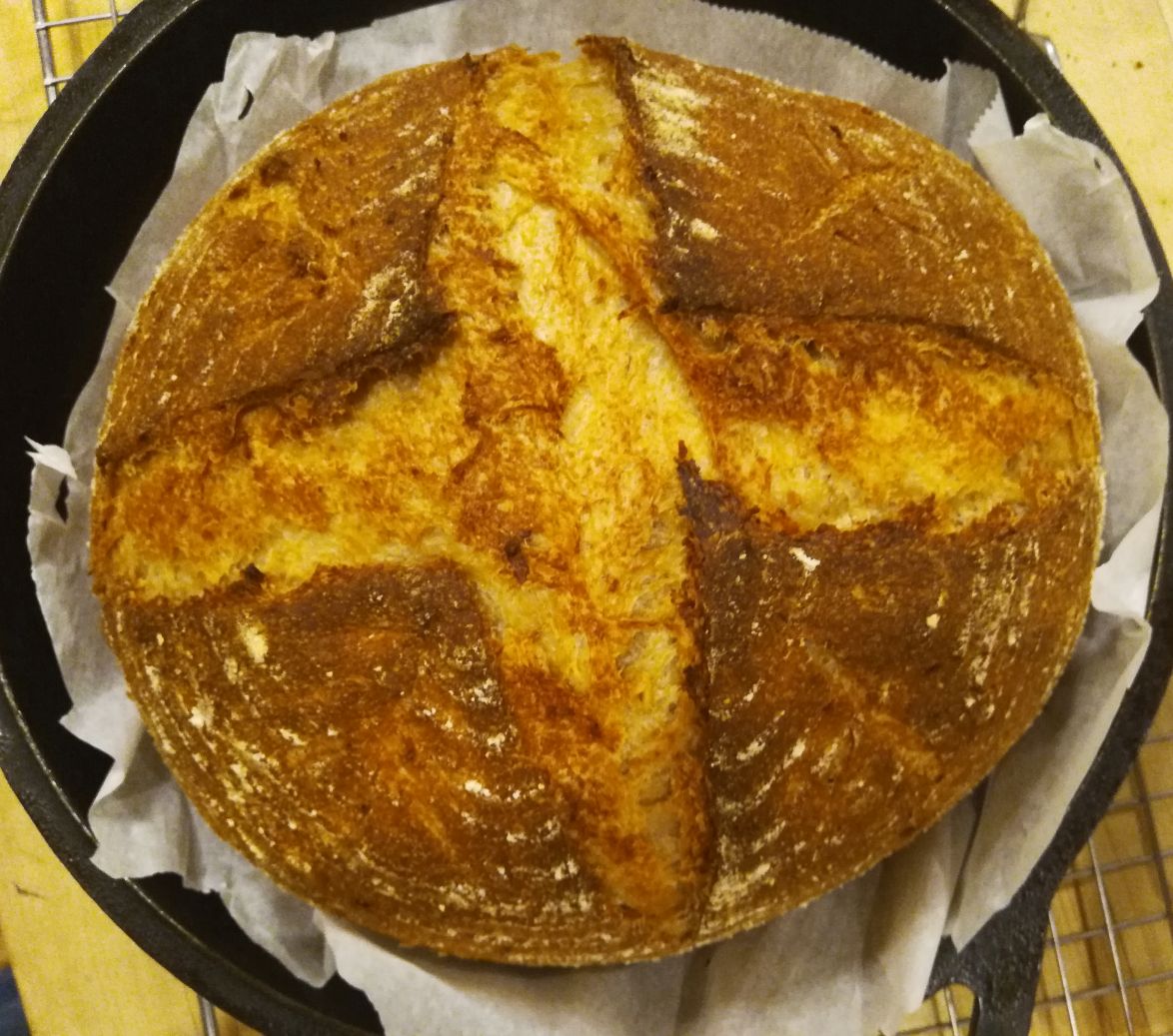
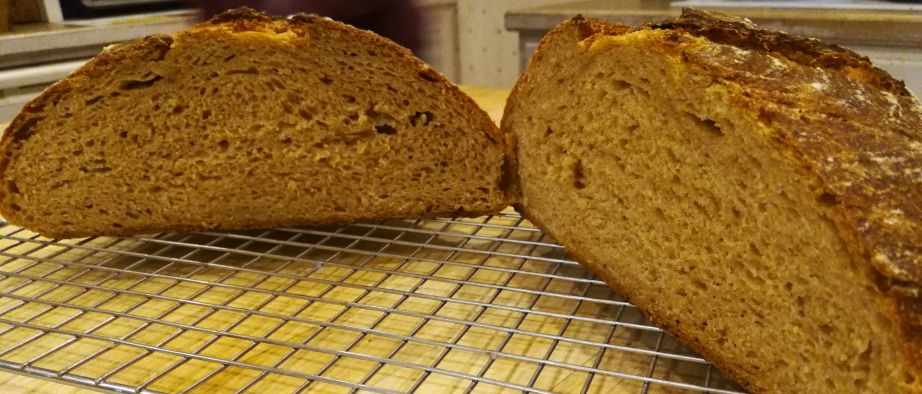
The loaf was higher before I cut it. Because it was slightly underbaked and my dough knife is very dull, I accidentally smashed the loaf down about an inch while attempting to cut it.
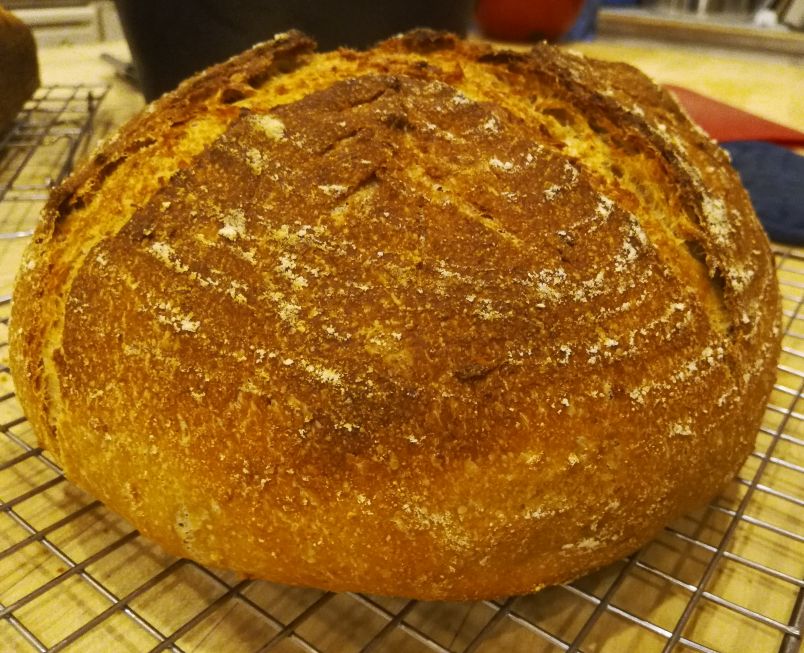

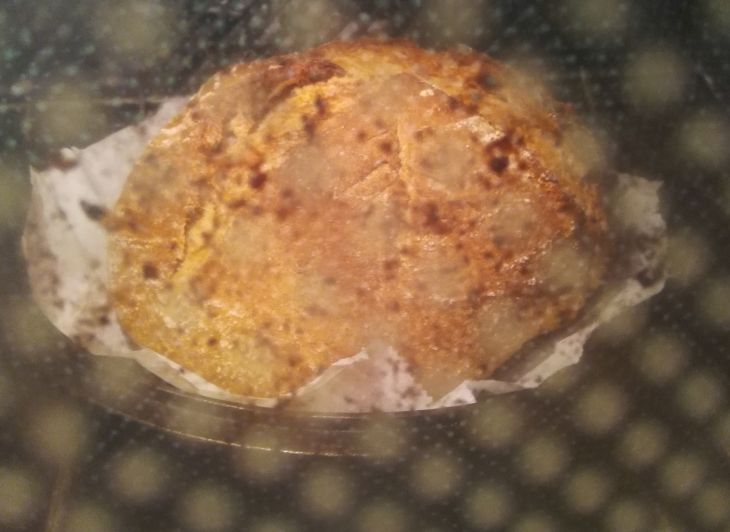
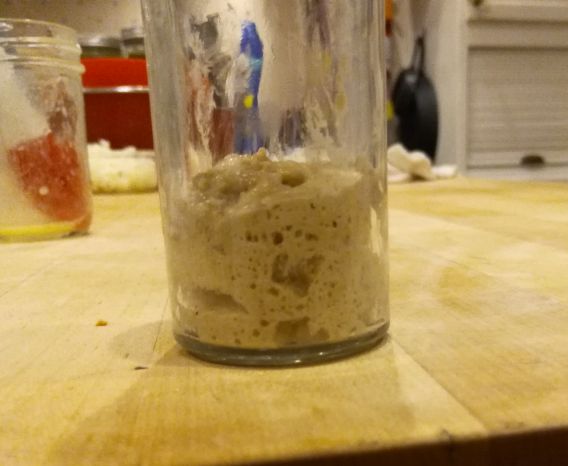
Aliquot before loading into oven. My marker writing got washed off accidentally.

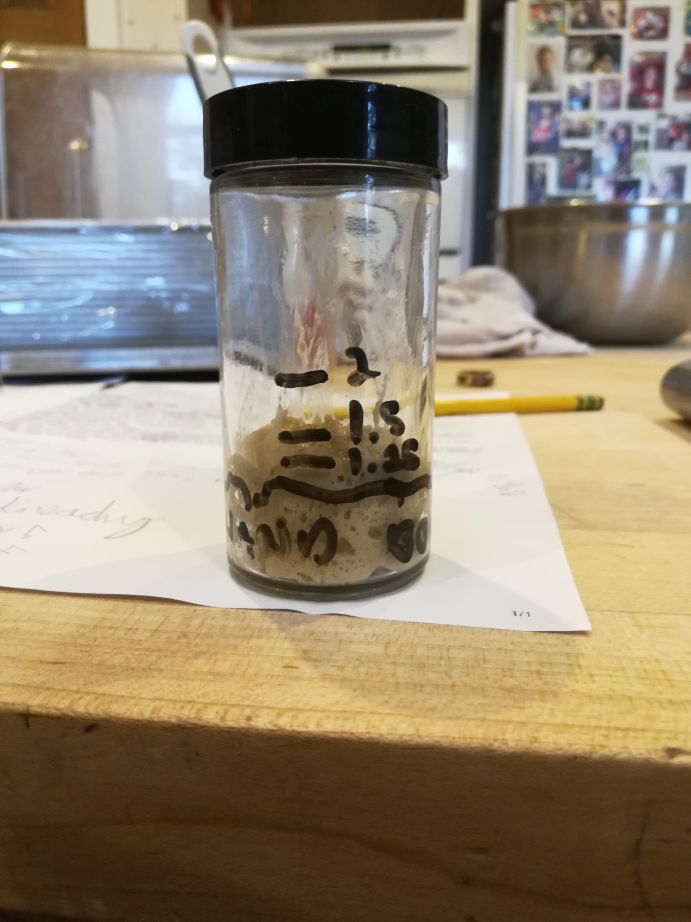
Aliquot before shaping


Comments
Looks great!
BTW, I found that 22 hours is my minimum wait time for end-of-bake to cutting-open, for a near 100% WW boule. It makes a difference in both taste and internal moisture.
Nice looking loaf! I like to use painter's tape on the aliquot jar since mine is plastic and marker might be hard to clean off.
Was impressed by the rise and shape, not easy to achieve with 100% wholewheat.
A little confused as to why you want less bulk and more proof, especially since your rise was quite good. The 1.25X on the aliquot seemed about right, and if anything I might think 1.5X - more bulk - might be where crumb could be more open. I say could because you did pretty well and this is 100% WW after all.
"A little confused as to why you want less bulk and more proof, especially since your rise was quite good"
Mainly, I want to see how open I can get the crumb. But, really there is a lot going on in my head about this last bake. Lots of unanswered questions, and for various reasons, I am very much interested to see what will happen with a short bulk and long proof.
Questions Swirling Around in Head that are Bugging me:
Don't get me wrong, I was super excited about the rise, shape, and exterior look of this loaf. And I agree, the crumb looked good too. But, I just want to see how far I can take things, explore all possibilities, and learn along the way too.
and I too am going to experiment a bit and bring the end of "bulk" forward a tad. Especially intrigued by mwilson's comment regarding "Strength, strength to hold its shape."
Sometimes, the aliquot just 'lies' and doesn't match the state of the dough in the bulking container. It feels like the volume can be a factor in this - en mass the microorganisms have greater access to food then the small little sample of food that they've been given in their tiny jar and can grow more aggressively in the bulking container. And, since I do like going in and out of the fridge, I also know that it messes with the aliquot reading if there are strong temperature fluctuations and is inaccurate for fridge proofing.
Kristen of Full Proof baking also talks about the limitations of the aliquot at about 3:25 in this video - https://www.youtube.com/watch?v=8BvoEWDNRfs - also note that she uses a fairly narrow and hence more accurate jar, that kind of precision shows in her baking too. And she calls for a 1.9X volume increase prior to shaping!
I have Trevor J's book too, but confess I feel that a lot of it will only make sense after I've been making bread for 20 years with the same recipe day in and day out! Which means never, I guess as that would be so boring.
I was planning on taking another shot at this boule yesterday. But my main bake was such a pain in the butt that I decided I wasn't mentally stable enough to squeeze in a bumper bake.